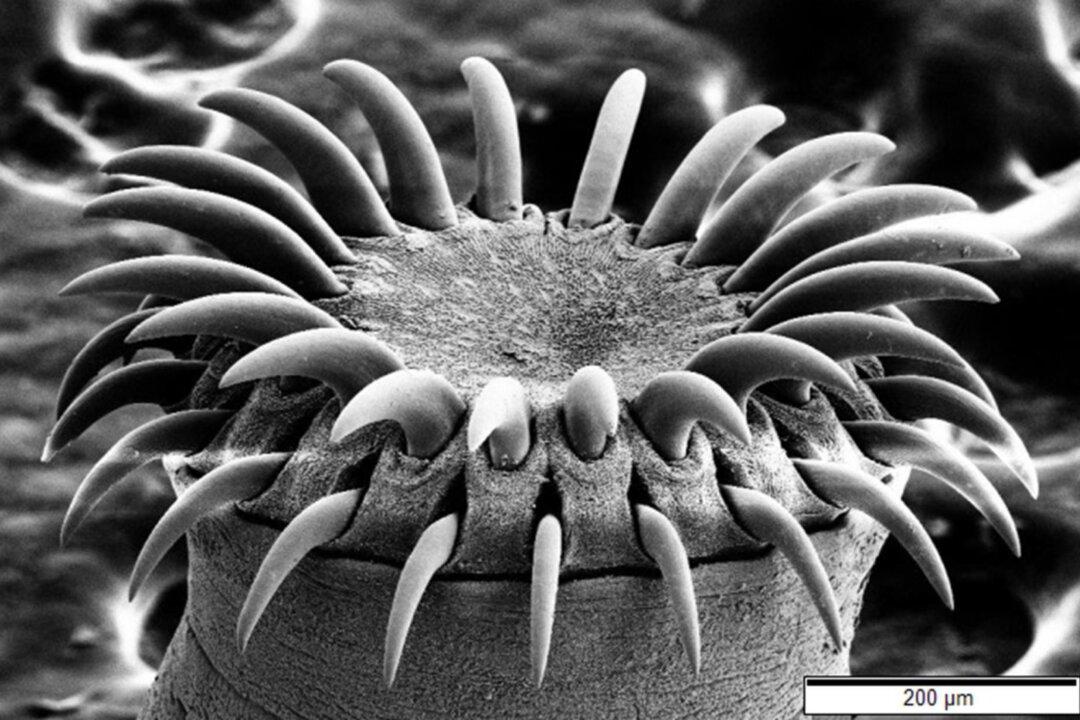
An electron microscope image of a tapeworm's head. ("Tapeworm SEM" by Mogana Das Murtey and Patchamuthu Ramasamy [CC BY-SA 3.0 (ept.ms/2Bw5evC)])
A Singaporean man had no idea he‘d been a victim of a parasitic infection. He’d suffered no symptoms at all, until one day he passed a huge tapeworm.
At over 9 feet, the worm was about one-and-a-half times longer than the man. Doctors had to bend it 18 times to fit it into a picture.





